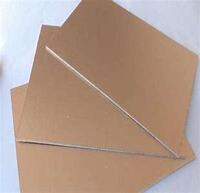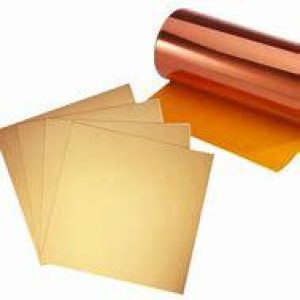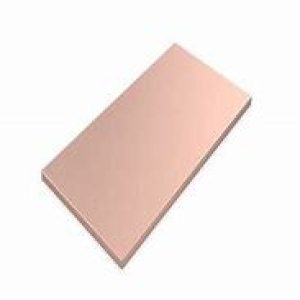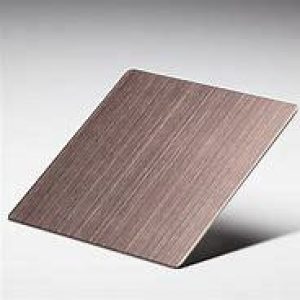Overview of Cold/Hot-Rolled Brass High-Purity99.99% T1/T2/Tp1/Tp2/Tu1/Tu2 H62/H65/H68/H70/H80/H90 Alloy-Electrolytic Cathodes Copper Plate
A copper plate is a flat, thin sheet of pure copper or copper alloy, meticulously manufactured to precise dimensions and finishes for a broad spectrum of industrial, commercial, and artistic applications. These plates exhibit the inherent characteristics of copper, including high thermal and electrical conductivity, outstanding corrosion resistance, remarkable ductility, and an appealing aesthetic that evolves over time with a natural patina formation.
The production process typically involves rolling copper ingots or continuous casting strips to the desired thickness, followed by trimming and finishing operations to ensure a uniform surface and edge profile. Copper plates can be supplied in various grades, each tailored to specific end-use requirements. Common grades include tough pitch copper (electrical applications), phosphor bronze (wear-resistant applications), and brass (decorative and architectural use).
Features of Cold/Hot-Rolled Brass High-Purity99.99% T1/T2/Tp1/Tp2/Tu1/Tu2 H62/H65/H68/H70/H80/H90 Alloy-Electrolytic Cathodes Copper Plate
-
High Conductivity: Copper is second only to silver in terms of electrical conductivity and thermal conductivity, making it ideal for electrical wiring, heat exchangers, and cooking utensils.
-
Corrosion Resistance: Copper forms a protective patina over time, which prevents further corrosion, allowing it to withstand harsh environments without significant degradation. This property is particularly useful in marine and industrial applications.
-
Malleability and Ductility: Copper can be easily shaped and formed into complex designs without fracturing, making it suitable for artistic and architectural applications like roofing, statues, and decorative elements.
-
Antimicrobial Properties: Copper naturally inhibits the growth of bacteria, viruses, and fungi, which makes it a preferred material for touch surfaces in healthcare facilities and food processing equipment.
-
Recyclability: Copper is highly recyclable with no loss of quality, contributing to sustainable practices and reducing the overall carbon footprint associated with its use.
-
Aesthetic Appeal: With its warm, reddish-brown hue, copper adds an attractive finish to architectural features and decorative items, often developing a greenish patina over time that is also aesthetically pleasing.
-
Variety of Grades and Thicknesses: Copper plates are available in different grades (such as pure copper, brass, or bronze) and a wide range of thicknesses to suit specific application requirements.

(Cold/Hot-Rolled Brass High-Purity99.99% T1/T2/Tp1/Tp2/Tu1/Tu2 H62/H65/H68/H70/H80/H90 Alloy-Electrolytic Cathodes Copper Plate)
Parameters of Cold/Hot-Rolled Brass High-Purity99.99% T1/T2/Tp1/Tp2/Tu1/Tu2 H62/H65/H68/H70/H80/H90 Alloy-Electrolytic Cathodes Copper Plate
The parameters you’ve mentioned refer to different types of brass, which are copper alloys, and their manufacturing processes. Here’s a breakdown of the abbreviations and typical characteristics:
1. Cold Rolled (CR): Brass is cold-rolled when it’s formed at room temperature without heating, resulting in a smooth surface finish and tight tolerances.
2. Hot Rolled (HR): Brass can also be hot rolled, where it’s heated above its recrystallization temperature, making it easier to shape but may have a rougher surface compared to cold rolled.
3. T1/T2/Tp1/Tp2/Tu1/Tu2: These are various grades of brass, where T stands for “tempered” (T1 is fully annealed, T2 is half-hardened, and so on). The number indicates the degree of hardness and toughness. T1 has better machinability, while T2 offers a balance between strength and ductility.
4. H62/H65/H68/H70/H80/H90: These are numerical designations for brass alloys, with increasing levels of copper and decreasing zinc content. H62 is a common general-purpose brass with about 62% copper, H65 has slightly more copper (65%), and so on. H90 has very high copper content (90%) and is often used for decorative applications.
5. Electrolytic Copper Cathodes: These are copper plates that serve as anodes in the electroplating process, providing a pure copper surface for coating other metals. The cathode material should be high-purity copper like the ones mentioned, typically 99.99%.
6. Copper Plate Parameter: This likely refers to additional specifications, such as dimensions (thickness, width, length), tolerance, surface finish (Roughness, RA), electrical conductivity, yield strength, elongation, and other mechanical properties.
To get specific details on a particular product, you would need to consult a technical data sheet from a supplier or manufacturer. They will provide detailed information on dimensions, chemical composition, and performance characteristics.

(Cold/Hot-Rolled Brass High-Purity99.99% T1/T2/Tp1/Tp2/Tu1/Tu2 H62/H65/H68/H70/H80/H90 Alloy-Electrolytic Cathodes Copper Plate)
Company Profile
Copper Channel is a trusted global metal material supplier & manufacturer with over 12-year-experience in providing super high-quality copper products and relatives products.
The company has a professional technical department and Quality Supervision Department, a well-equipped laboratory, and equipped with advanced testing equipment and after-sales customer service center.
If you are looking for high-quality copper materials and relative products, please feel free to contact us or click on the needed products to send an inquiry.
Payment Methods
L/C, T/T, Western Union, Paypal, Credit Card etc.
Shipment
It could be shipped by sea, by air, or by reveal ASAP as soon as repayment receipt.
FAQs of Cold/Hot-Rolled Brass High-Purity99.99% T1/T2/Tp1/Tp2/Tu1/Tu2 H62/H65/H68/H70/H80/H90 Alloy-Electrolytic Cathodes Copper Plate
-
What are the common uses of Cold/Hot-Rolled Brass High-Purity99.99% T1/T2/Tp1/Tp2/Tu1/Tu2 H62/H65/H68/H70/H80/H90 Alloy-Electrolytic Cathodes Copper Plate?
- Cold/Hot-Rolled Brass High-Purity99.99% T1/T2/Tp1/Tp2/Tu1/Tu2 H62/H65/H68/H70/H80/H90 Alloy-Electrolytic Cathodes Copper Plate is commonly used in electrical components, roofing, plumbing, artwork, cookware, industrial machinery, and as heat sinks in electronic devices.
-
Is Cold/Hot-Rolled Brass High-Purity99.99% T1/T2/Tp1/Tp2/Tu1/Tu2 H62/H65/H68/H70/H80/H90 Alloy-Electrolytic Cathodes Copper Plate expensive compared to other metals?
- The cost of copper fluctuates with market conditions but generally, it is more expensive than some other common metals like steel due to its superior conductivity and durability. However, its long-term value and recyclability can offset initial costs.
-
Can Cold/Hot-Rolled Brass High-Purity99.99% T1/T2/Tp1/Tp2/Tu1/Tu2 H62/H65/H68/H70/H80/H90 Alloy-Electrolytic Cathodes Copper Plate be soldered or welded?
- Yes, Cold/Hot-Rolled Brass High-Purity99.99% T1/T2/Tp1/Tp2/Tu1/Tu2 H62/H65/H68/H70/H80/H90 Alloy-Electrolytic Cathodes Copper Plate can be both soldered and welded. They have excellent properties and are often joined using techniques like TIG welding, brazing, or soldering.
-
How does one clean and maintain Cold/Hot-Rolled Brass High-Purity99.99% T1/T2/Tp1/Tp2/Tu1/Tu2 H62/H65/H68/H70/H80/H90 Alloy-Electrolytic Cathodes Copper Plate?
- For basic cleaning, a mild soap and water solution is usually sufficient. For removing tarnish or stains, a mixture of salt, vinegar, and flour or commercial copper cleaners can be used. Avoid abrasive materials that might scratch the surface.
-
Does Cold/Hot-Rolled Brass High-Purity99.99% T1/T2/Tp1/Tp2/Tu1/Tu2 H62/H65/H68/H70/H80/H90 Alloy-Electrolytic Cathodes Copper Plate rust?
- Copper does not rust like iron; instead, it undergoes a process called patination, where it forms a greenish layer called patina. This patina actually protects the underlying copper from further corrosion.
-
Can Cold/Hot-Rolled Brass High-Purity99.99% T1/T2/Tp1/Tp2/Tu1/Tu2 H62/H65/H68/H70/H80/H90 Alloy-Electrolytic Cathodes Copper Plate be used outdoors?
- Absolutely, copper is highly resistant to weathering and its natural patination process enhances its durability outdoors, making it suitable for roofing, gutters, and outdoor sculptures.

(Cold/Hot-Rolled Brass High-Purity99.99% T1/T2/Tp1/Tp2/Tu1/Tu2 H62/H65/H68/H70/H80/H90 Alloy-Electrolytic Cathodes Copper Plate)





